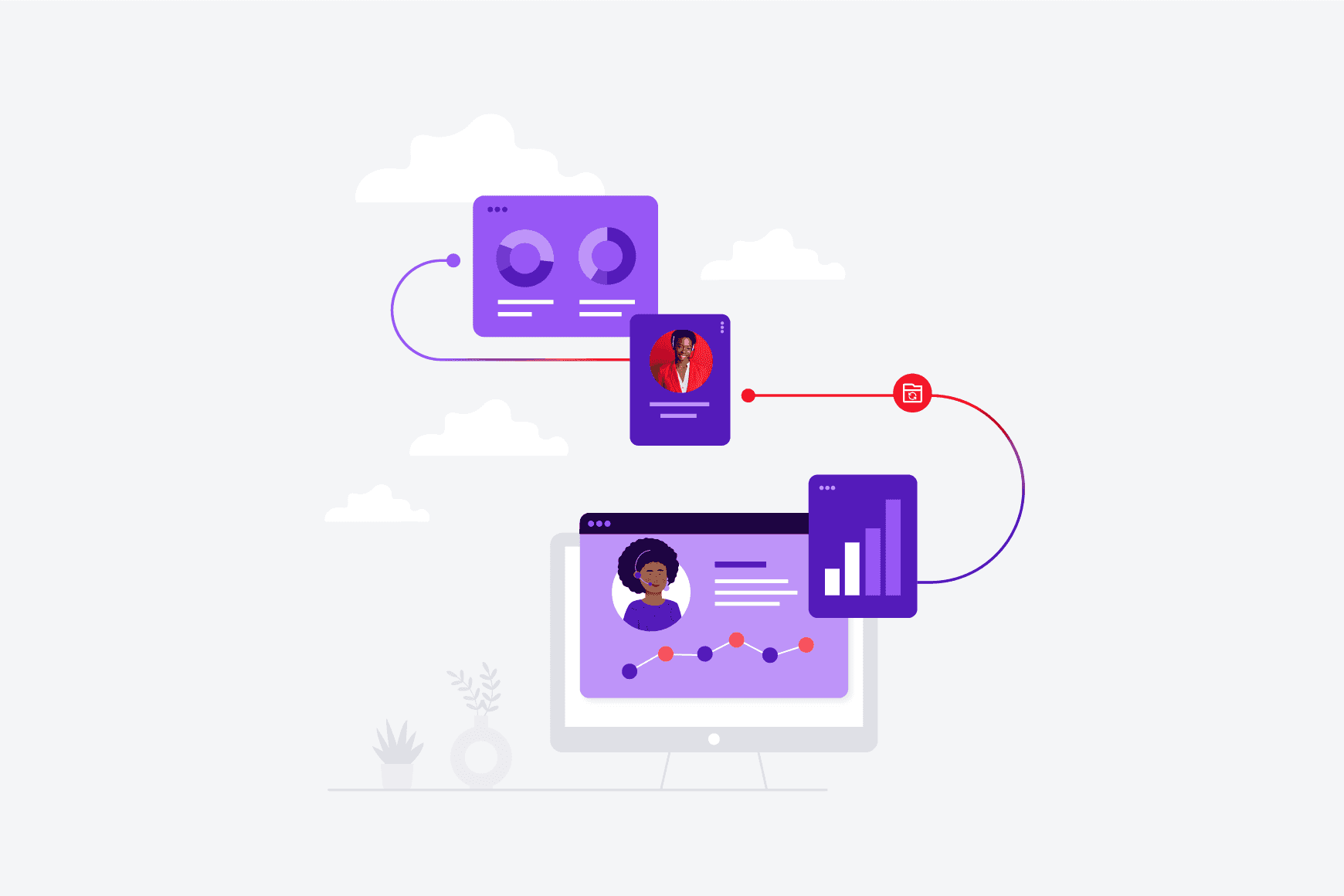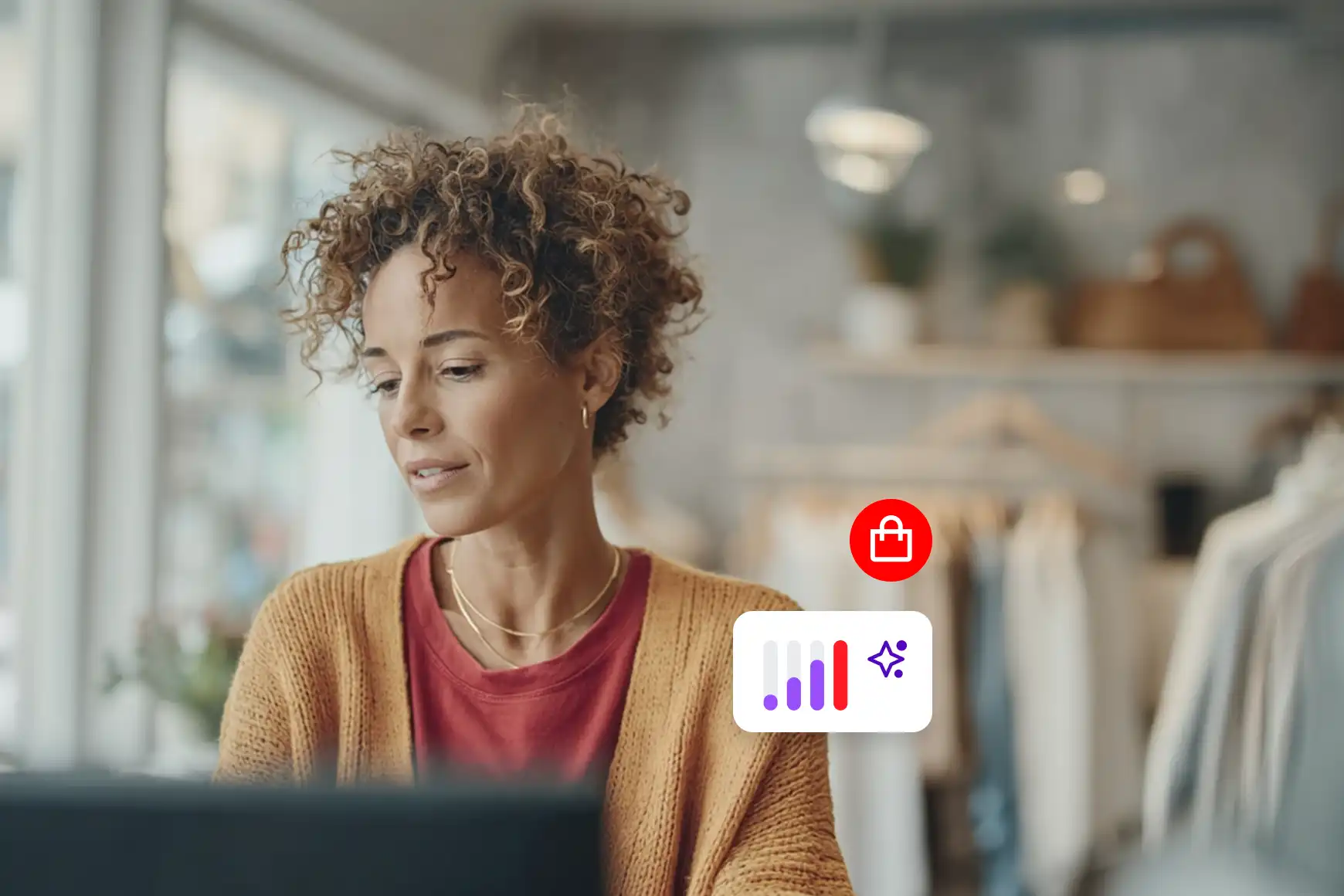Retail cloud contact center migration kit: White paper, checklists, and blogs

By Génesis Longo
0 min read

Tired of spending precious time going back and forth on whether or not you should migrate your contact center to the cloud? Get the retail cloud contact center migration kit.
It seems like when retailers decide to make the move, the daunting task of actually making it happen gets in the way. With so much to consider, and so much to risk, it’s easy to understand why 29% of retailers are still putting up with 100% on-premises contact centers. Yet, despite the challenge, 9 in 10 of those retailers that are not fully cloud-based report that they are likely to transition to the cloud in the next two years.
Migrating to the cloud requires a vast knowledge of systems and processes, as well as deep considerations of integrations, security, and even change management. It’s easy to get overwhelmed. That’s why we’ve gathered this list of different cloud contact center migration assets. From choosing a partner to ensuring adoption, and even undergoing the buying process, these resources will streamline every step of retailers’ cloud migration journeys.
You can download the entire bundle or scroll down for the individual assets for each topic:

Cloud contact center migration resources: Strategy.
Cloud-native contact centers bring inherent benefits that are vital in today’s consumer environment:
- Scalability—an unlimited ability to enhance performance and add new systems and capabilities.
- Agility—the flexibility and speed to access vital resources anywhere in the world as soon as market dynamics demand.
- Extensibility—pre-built integrations and application programming interfaces (APIs) to seamlessly connect core business systems and enable data exchange.
- Resiliency—redundant architecture that reduces downtime, prevents data loss, and enables compliance.
- Data-driven—limitless storage and centralized access to data that make it easier and faster to share insights across the enterprise.
- Cost-effective—reduced IT resource utilization and pay-as-you-go models that provide budget flexibility and financial stability.
Despite this, many retailers are operationally dependent on their legacy systems and many are still trying to achieve the return on investment (ROI) from their original capital expenditures. The benefits of the cloud far outweigh the costs of running a system designed in a previous era. Manual updates, point-to-point integrations, delayed and incomplete access to critical data, waiting for developer resources to make simple updates—these drain budgets, produce poor customer experiences, and expose the business to risk.
Below are some various resources to help you make the case for a cloud-native contact center.
1. Guide: Cloud contact center migration guide for retailers.
When making the case for migration, stakeholder buy-in is essential. But oftentimes, teammates don’t understand the vitality of the move. To help, we’ve put together a comprehensive guide you can email or print out and send to a colleague.
The Cloud contact center migration guide for retailers talks about everything in this blog but in a more consolidated format so that your teams can easily skim and digest the information in it.
It is ideal to get IT leaders or C-suite executives on board for your migration project. It also ensures those leaders get on the same page as you in terms of what migration entails, and to be honest, it will make you look really smart.
DOWNLOAD THE CLOUD CONTACT CENTER MIGRATION GUIDE FOR RETAILERS.
2. Checklist: How to select the right customer service solution and make better CX investment decisions.
The term contact center can be a little confusing because, here at Talkdesk, we mean a lot more than what generally comes to mind. For us, contact centers are truly customer experience (CX) hubs that live at the center of all customer interactions– they’re the heart of CX. From the contact center, you should be able to have a 360º view of every customer. When preparing for a contact center migration, you need to make sure you’re bringing all customer interactions to the cloud:
- Contact center platforms.
- Customer experience management platforms.
- Data and analytics.
- Voice of the customer.
Though it seems daunting, this buying criteria checklist will help. And fear not, you don’t need a million vendors to make a 360º view of your customer possible. Talkdesk makes it easy.
CHECK THE BUYING CRITERIA CHECKLIST.
3. White Paper: Contact center maturity model–Define your vision for CX greatness.
Migration is a process, and no one can go from 0 to 100% at the click of a button, especially when you’re not sure what 100% looks like. To define what 100% looks like for your brand, you must evaluate where you are today:
- How is your customer experience?
- What are the goods, the bad, and the ugly?
- What do your customers say about the service they get?
- What does a “happy path” look like for your customers?
- What channels are available for your customers to reach you through?
- At what level of maturity is your contact center at right now?
- Is your contact center able to handle the explosion of channels so common in the retail world?
- How do you measure the success of your contact center?
- What KPIs are you tracking?
- What does your roadmap for innovation look like?
For details on how to answer these questions and more, this is the right resource to have.
DOWNLOAD THE WHITE PAPER DEFINE YOUR VISION FOR CX GREATNESS.
Cloud contact center migration resources: Security.
Some of the greatest barriers for cloud migrations are security considerations—but that’s ironic because on-premises-based firewalls often use outdated technology, and the integration points with other applications are often fragile and expose system vulnerabilities. Data can also be slow to synchronize between systems—making it difficult to detect an irregularity in time to proactively manage and minimize any fallout. The web application firewalls (WAF) on cloud-native platforms offer the same granularity of control as on-premises firewalls but can be much faster at detecting malicious traffic.
Moving to a cloud-native contact center platform delivers immediate benefits that cannot be experienced via a fully or partially on-premises system. It also sets the stage for integration and automation—next-generation digital transformation that can significantly improve agent productivity, lower IT costs, and streamline vendor management.
Here are some assets to address security issues:
1. Checklist: Hybrid contact center security.
If you’re going through a migration for the first time, especially in the hybrid world we live in, you must be wondering:
- How do I access control and management of a hybrid contact center?
- How do I oversee agents and manage compliance?
- How do I select a vendor?
We got you. Look no further than this.
DOWNLOAD THE SECURITY CHECKLIST FOR THE HYBRID CONTACT CENTER.
2. Blog: Contact center risk management.
The person who said “out of sight, out of mind” clearly wasn’t in charge of securing a hybrid contact center—if that sounds like something you would say, read this blog about securing your contact center for a hybrid model! It provides an understanding of how technology helps secure contact centers, and of why physical security is more important than ever.
3. Blog: Why VPN is a poor choice for enabling a remote call center staff.
The title on this one explains itself. But if it’s not obvious, check out this blog if you’re using VPN connections to your on-premises phone system.
Cloud contact center migration resources: Integrations.
Integrations are key for a successful contact center cloud migration. To deliver the customer experience expected today—seamless, omnichannel interactions—requires data and application integration. Service representatives need to be able to immediately engage with the customer through their preferred channel and can’t stumble opening applications and searching for data. And for all of that, integrations are necessary:
- Talkdesk for Salesforce.
- Talkdesk Zendesk Connector.
- Talkdesk Slack Connector.
- Talkdesk Microsoft Teams Connector.
- Talkdesk Zoom Connector.
Integrated systems set the foundation for automation, the next step on the path to digital transformation.
Cloud contact center migration resources: Advocating for a contact center transformation project.
A contact center transformation is impossible without the buy-in and support from stakeholders. Not only is their buy-in crucial in the budget-setting and buying process, but also in the implementation and adoption process. The most successful migrations happen when everyone sees the potential and the value of the contact center, and its strategic place in the organization.
Here are a few materials that will help you get buy-in for the contact center migration:
1. Checklist: CX champion’s checklist.
In the CX champion’s checklist, you will find all you need to advocate internally for CX initiatives. Print it out or make it your screensaver—if you’re pushing for a contact center transformation, you’re going to need it.
DOWNLOAD THE CX CHAMPION’S CHECKLIST.
2. Deck: Transforming our contact center into a growth center.
Presenting about the potential of your contact center? Use our slide deck. These slides are great to give your team an introduction to the project.
DOWNLOAD THE CX CHAMPIONS SLIDE DECK.
3. Datasheets.
The value of Talkdesk and contact center transformations goes beyond the walls of the contact center itself. Share these datasheets with your teams about the potential to be tapped into:
4. Talkdesk brochure.
For more information about Talkdesk, send your team this Talkdesk brochure.
Cloud contact center migration resources: Buying.
If you’re reading all this thinking “I’m ready to start the buying process” then move on to this Buyer’s Kit . This kit includes:
- Benchmarking tool: A benchmarking tool to compare key metrics and recognize market trends, uncovering opportunities to improve your CX.
- Benefits list: A list of the top eight measurable benefits of moving to a cloud contact center.
- Editable RFP template: A contact center RFP editable template to ease your contact center vendor evaluation and selection process.
- Vendor evaluation guide: 16 questions for a productive reference check.
- Analyst and user reviews: Reviews from analysts and users for holistic feedback and points of view on contact center vendors and solutions.
All-in-one retail contact center cloud migration pack: Conclusion.
Retail is an ever-changing, ever-evolving industry. While that helps keep things fun, it also makes it stressful. Trying to grow a business while keeping it secure and keeping its employees happy is a challenge for sure. But having it all on the cloud makes it easier. Whether you are just getting started in your cloud migration journey or are a retail CX professional looking to wow your customers and CX team, even more, I hope these resources will make your workday a little easier. And when you’re ready, let’s talk.
Before you go, let me ask: What Talkdesk cloud migration assets have helped you most?
Is there anything I should add to this list? Let me know at [email protected].








